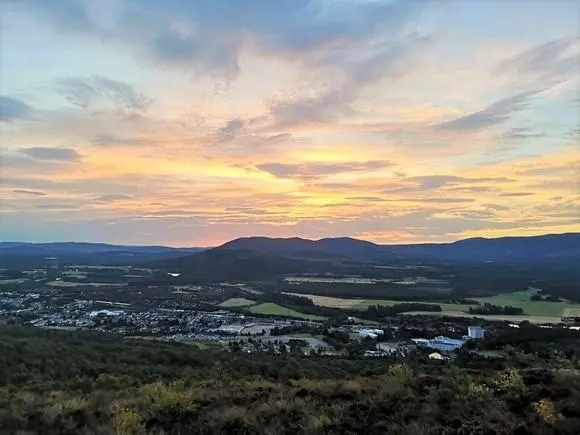“BUY land,” American wit Mark Twain famously quipped, “they’re not making it anymore.”
That investment advice would have proven wise in Scotland in 2020, according to a report published earlier this week.
Compiled by the Scottish Land Commission (SLC), the report found that prices for farmland in north east Scotland had risen by 58% between 2020 and 2022, 42% in the south west, and 25% in the Highlands and Islands.
Asked if investors in Scottish land could expect to continue to see such returns, SLC chief executive Hamish Trench said: “We don’t know. That’s the short answer.”
He said the skyrocketing prices were a result of “a match of very high demand and low supply”, but added that the incomplete picture we have of land transactions in Scotland makes analysing patterns very difficult.
“Getting a fuller picture of how the rural land market is working in Scotland is important, vital, to informing some of the changes in law and policy that we’re looking at in terms of land reform,” Trench said.
“What we’re trying to do here is to bring more information, a better picture, better transparency to the way the rural land market is working.”
The SLC chief said there had “long been a challenge in relation to Scotland’s land in terms of the openness and transparency of information”, raising concerns that sometimes communities were not even made aware that local land was on the market until it had already been sold.
“We know that there’s quite a number of transactions that actually have off-market, where they aren’t brought to public sale,” Trench (below) said.

“Over the last two years, we’ve started to develop new reporting approaches for the rural land market precisely because there’s been very little information giving an overview of this.
“What we see regularly, of course, are sector reports from agents operating in the market, for example, companies like Savills or Strutt & Parker.
“Inevitably, agents’ reports will focus on the parts of the market that they’re operating in. So you get different reports that focus on different sectors, for example, forestry, farmland or estates, and different sizes of transactions.
“Our report is really trying to capture all of that in a single approach that gives a better picture of what’s happening across the market.”
The SLC report published earlier in the week covered the years 2020-2022. Moving forward, the publication is set to become an annual date on the land commission’s calendar.

“We’re trying to do this work regularly, year on year, so that we can actually track a pattern of what is happening,” Trench said.
The SLC chief explained that one “significant driver” of rising prices had been an increase in demand for commercial forestry land, while one of the “newer factors” was companies looking to buy land for carbon investment and offsetting.
“This new report shows that although it may not be adding up to a large percentage of sales, it’s certainly significant,” Trench said. “Particularly in upland Scotland and in the estates market, where we’re seeing a new motivation of nature- and climate-driven acquisition.
“We’re seeing some corporate buyers, for example, wanting to buy land essentially to offset their own emissions within a business, examples like Brewdog or [investment firm] Abrdn.”
Trench said that data in SLC reporting could help inform work on “stronger regulation to manage those markets”.
The Scottish Government has previously said it will introduce a land reform bill “by the end of 2023”.
Asked in Holyrood in September about the bill’s progress, Rural Affairs Secretary Mairi Gougeon said the Government was “committed to introducing a land reform bill to further improve transparency of land ownership [and] to help ensure that large-scale land holdings deliver in the public interest.”
The Scottish Government has proposed a limit of 3000 hectares, above which land sales will trigger a public interest test.
Campaigners have called this “timid” and called for a 500-hectare trigger, while the SLC and others have suggested the trigger could be linked to “whether the holding controls key local infrastructure”.
This is one of the areas where the SLC’s work could inform policy. Trench said: “What’s helpful is understanding from this report that 93% of sales are under 500 hectares, and there are relatively few sales over 3000 hectares [some 1.1%]. So it helps provide some context to think about how that kind of measure would work.”
Source : Yahoo









